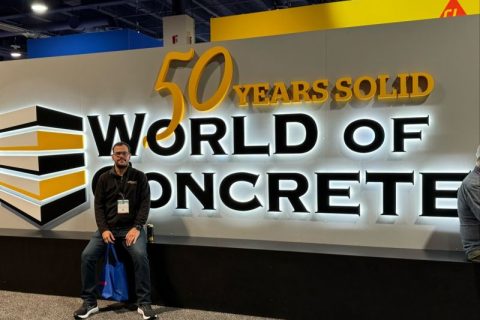By Daniel Green
Making a perfectly round hole through material as hard as rock can be achieved with one machine and one machine only: the core drill. This masonry equivalent of a hole saw is an extremely versatile piece of kit dating back to the 1860’s. Inventor Rodolphe Leschote needed a better way to insert blasting compound into rock, and thus the core drill was born.
A century and half later has seen remarkable developments in this field with several manufacturers bringing extremely durable products to the market. Core drilling a highly technical exercise that requires good common sense, attention to detail and physical toughness.
Let take a look.
Preparation of Your Work Area
Like any job, first and foremost you need to start with the end in mind. You need to know what you’re trying to achieve and why. Core drilling can be used in various ways: straight coring for drainage or services, stitch coring for a new doorway or staircase, for blasting, for setting rod and many other reasons. When you know the what and the why allows you to determine the how.
Coring demands your attention. If all your focus is on your drilling then your work area must be set prior to beginning.
- Identify any hazards, including potential hazards that haven’t yet eventuated.
- Delineate your work area so that you can focus solely on drilling.
- Check for services in, around and behind the material you will be drilling. Also try and locate any steel reinforcement. Avoid it if possible.
- Have your supervisor, the builder or the client mark where the cores will be – they will know better than you.
- If drilling through a floor slab, delineate the area below you so that slurry and the core cannot fall and injure someone.
- Ensure adequate slurry collection.
- If you are drilling with a gasoline powered machine, ensure adequate ventilation.
- Make sure lighting is plentiful.
- Wear full PPE including aural and ocular protection. Have spare PPE on hand.
- If working at height, ensure proper height multipliers are in place such as scaffolding.
- Consider how you will get your waste cores out?
- Determine if you need to use the stand [the rule of thumb is that cores over 65mm will produce so much torsional loading that you will need the stand].
- Use the shortest extension lead possible due to voltage droop.
- Remember, bigger barrels demand more amperage due to turning resistance. The same is the case with deeper cores. Max draw can be up to 25a which is far beyond what a traditional 240v outlets can supply [usually 10a].
- Ensure the machine has been correctly serviced and that all tools & other equipment is with you.
- Check that you have the appropriate core barrel for the job and that it is undamaged, that the cutting teeth are not blunt and are still affixed.
Machine Preparation
This is one of the most critical components. An unsecured barrel can wreak havoc.
- Ensure barrel and machine spindle threads are clean.
- Twist the barrel onto the drill and tighten by hand.
- Using the manufacturer supplied spanner, tighten the barrel onto the machine so that it is snug. During the coring operation it will self-tighten, so the barrel doesn’t need to be excessively tight at this stage.
- Test the machine to make sure your power supply is sound. Now is a good time to make sure your power cable will reach the work area.
- Plumb in your water supply and turn it on to ensure adequate flow.
Freehand Coring
The general rule is that when coring holes 65mm and under, the machine can be used without the stand. This is called freehand coring. It does introduce outside risks such as imperfect hole alignment and potential injury, but there are advantages like a reduction in work time.
- Test fit the drill to the parent material to ensure you can safely maintain control of the machine throughout the entirety of the operation. This is especially important for vertical surfaces, odd angles or upside down cores.
- Select the appropriate drill speed. Core drilling machines have three gears: low, medium and high. The low gear reduces barrel speed but increases torque. The opposite is the case with the high gear. The medium gear is a balance of both. The general rule of thumb is: the larger the barrel, the lower the gear.
- Begin water flow.
- Place the barrel teeth against the job and check you have the correct angle.
- Steady yourself against the impending drill movement.
- Depress the trigger.
- Drill until you have reached the appropriate depth.
- Withdraw the barrel from the parent material with the barrel still spinning.
- Shut down water supply, release trigger and place drill on a safe surface.
- Remove the core.
Remember, coring can be stopped at anytime throughout the process. Often times contact with steel reinforcement or other buried material will halt the drill regardless.
You can read the second half of this article, here.
Perfect Concrete Care. We Get It Done.

















